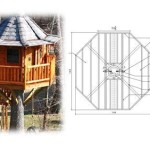DIY House Plant Fertilizer: A Guide to Nourishing Your Indoor Greenery
Indoor plants, while adding beauty and life to our homes, require specific care, including proper fertilization. Commercial fertilizers can be expensive and may contain chemicals that some gardeners prefer to avoid. Fortunately, there are several effective and environmentally friendly DIY house plant fertilizer options that can be easily prepared at home using common household ingredients.
1. Compost Tea
Compost tea is a rich and nutrient-dense fertilizer that promotes healthy root growth and vibrant foliage. To make compost tea, you will need a container with an airtight lid, a screened mesh bag, and a source of compost.
Instructions:
- Fill the container with water and add a handful of compost to the mesh bag.
- Submerge the bag in the water and seal the container tightly.
- Allow the mixture to steep for 24-48 hours, stirring occasionally.
- After steeping, remove the mesh bag and dilute the tea with water before using it to water your plants.
For best results, use a high-quality compost that is free of harmful chemicals or pesticides. Compost tea can be used regularly, every 2-4 weeks, depending on the plant's growth stage and the specific compost used.
2. Banana Peel Fertilizer
Banana peels are a surprising source of potassium, a vital nutrient for plant growth and flowering. The potassium in banana peels helps to promote strong stems, vibrant blooms, and overall plant health.
Instructions:
- Chop or blend banana peels into smaller pieces.
- Place the banana peels in a container and cover them with water.
- Allow the mixture to steep for 2-3 weeks, stirring occasionally.
- After steeping, strain the liquid and dilute it with water before applying it to your plants.
Banana peel fertilizer can be used every 2-4 weeks during the growing season. You can also bury the banana peels directly into the soil, allowing them to decompose slowly and release nutrients into the soil over time.
3. Eggshell Fertilizer
Eggshells are a rich source of calcium, which is essential for strong plant cell walls and healthy root growth. Adding eggshells to your soil can help to improve soil structure and provide a natural source of calcium for your plants.
Instructions:
- Rinse and dry eggshells thoroughly.
- Crush the eggshells into small pieces or powder them using a mortar and pestle or a food processor.
- Mix the crushed eggshells into the soil around your plants.
You can also make an eggshell tea by soaking crushed eggshells in water for a few days and then using the resulting liquid to water your plants. Eggshell fertilizer can be applied once every few months, or as needed, depending on the plant's calcium requirements.
4. Coffee Grounds Fertilizer
Coffee grounds are a great source of nitrogen, which is essential for healthy plant growth and leaf production. They also improve soil drainage and aeration.
Instructions:
- Use freshly brewed coffee grounds, making sure they are dry and free of any excess moisture.
- Spread the coffee grounds around the base of your plants, taking care to avoid direct contact with the stems.
- Water your plants as usual.
Note that coffee grounds can be acidic, so it's best to use them sparingly, especially for plants that prefer neutral or alkaline soil. You can also make a liquid coffee grounds fertilizer by mixing coffee grounds with water and letting them steep for a few days. This can be diluted and used to water your plants.
5. Epsom Salt Fertilizer
Epsom salt, or magnesium sulfate, is a readily available source of magnesium and sulfur, both of which are important for plant growth. Magnesium is crucial for chlorophyll production, essential for photosynthesis, while sulfur is vital for protein synthesis and overall plant health.
Instructions:
- Dissolve 1 tablespoon of Epsom salt in 1 gallon of water.
- Water your plants with the Epsom salt solution every 2-4 weeks, avoiding over-watering.
Always use Epsom salt sparingly, as excessive amounts can harm your plants. It is recommended to do a spot test first by applying the solution to a single plant and observing for any negative reactions before using it on your entire collection.

Make A Simple Organic Fertilizer For Healthy Indoor Plants Garden Therapy

How To Make Homemade Plant Food Creative Homemaking

How To Make Homemade Plant Food Creative Homemaking

The 10 Best Natural Homemade Fertilizers For Indoor Plants Sustainably Kind Living

11 Diy Homemade Plant Fertilizers With Recipes Gardening

11 Diy Homemade Plant Fertilizers With Recipes Gardening

The 10 Best Natural Homemade Fertilizers For Indoor Plants Sustainably Kind Living
:max_bytes(150000):strip_icc()/make-your-own-fertilizer-1388159-hero-025e07a9b96840568b5eb5050f4bab10.jpg?strip=all)
How To Make Your Own Fertilizer

Homemade Plant Food 7 Easy Natural Fertilizer Recipes An Off Grid Life

Chemist Solutions Easy Homemade Plant Food Recipe








